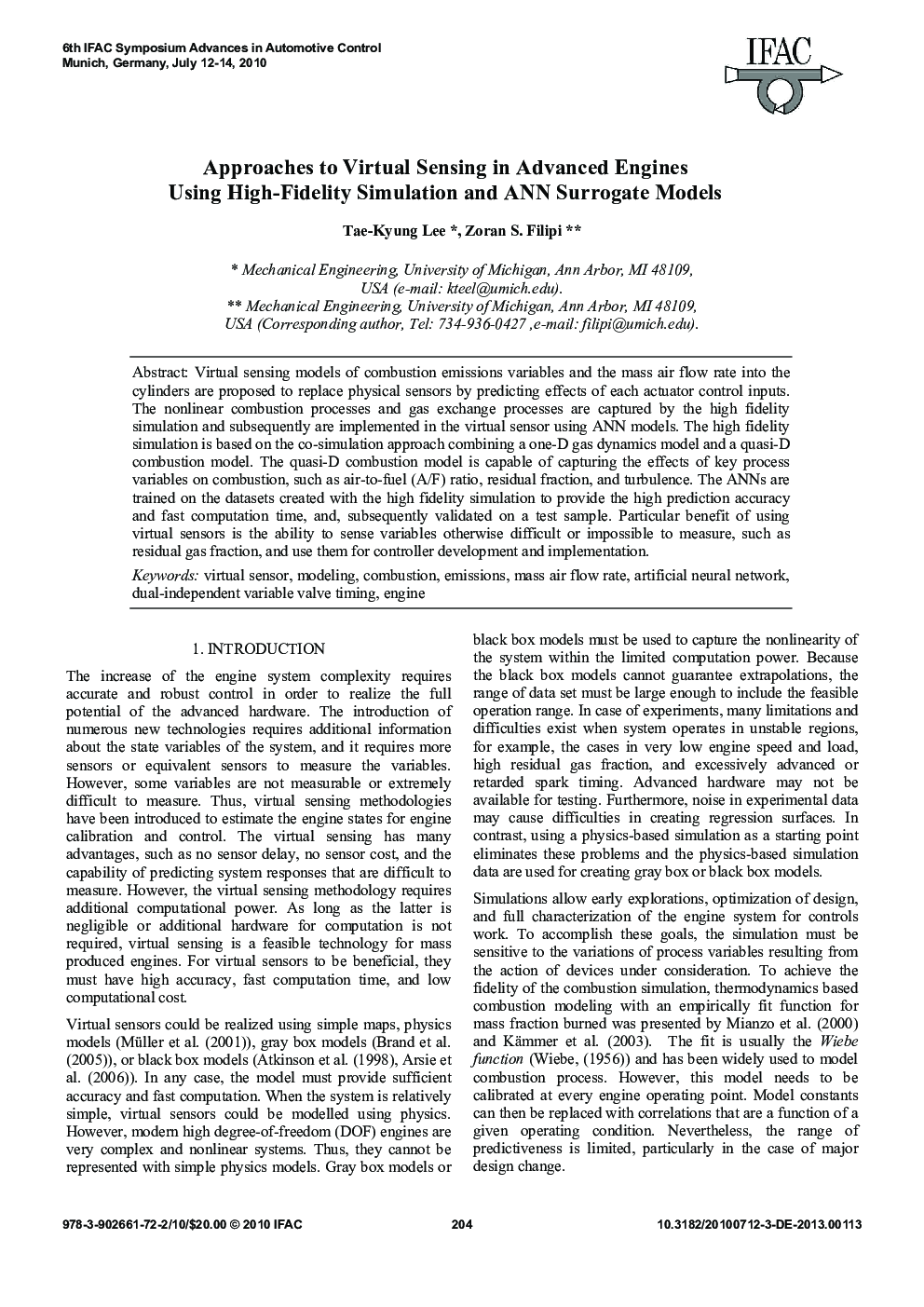| Article ID | Journal | Published Year | Pages | File Type |
|---|---|---|---|---|
| 719890 | IFAC Proceedings Volumes | 2010 | 6 Pages |
Virtual sensing models of combustion emissions variables and the mass air flow rate into the cylinders are proposed to replace physical sensors by predicting effects of each actuator control inputs. The nonlinear combustion processes and gas exchange processes are captured by the high fidelity simulation and subsequently are implemented in the virtual sensor using ANN models. The high fidelity simulation is based on the co-simulation approach combining a one-D gas dynamics model and a quasi-D combustion model. The quasi-D combustion model is capable of capturing the effects of key process variables on combustion, such as air-to-fuel (A/F) ratio, residual fraction, and turbulence. The ANNs are trained on the datasets created with the high fidelity simulation to provide the high prediction accuracy and fast computation time, and, subsequently validated on a test sample. Particular benefit of using virtual sensors is the ability to sense variables otherwise difficult or impossible to measure, such as residual gas fraction, and use them for controller development and implementation.
